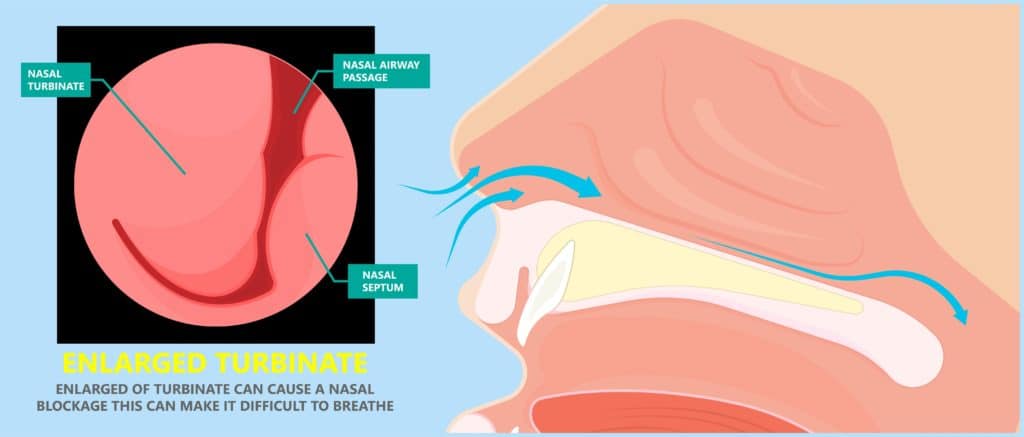Q: What are nasal turbinates?
A: The nasal turbinates are out-croppings of bone covered with mucous membranes on the sides of the nasal passages. There are three turbinates on each side of the nose- lower, middle and upper (also called inferior, middle and superior). Enlargement of the lower turbinates is referred to as turbinate hypertrophy and this causes a blockage in the nasal passage leading to a stuffy nose, mouth breathing and sensation of congestion – often worse at night.
The turbinates help to clean and moisturize air before it enters the throat and windpipe or trachea. So they are important in filtering and conditioning air. However, when they swell, especially on a permanent basis, they cause problems in breathing properly. This can happen with allergies and in people with a deviated nasal septum.
Q: What is nasal turbinate reduction surgery?
A: Several treatments are available for this condition. Medical treatment consists of saline nasal irrigation, and use of allergy nasal sprays like Flonase or Nasacort. If this treatment is inadequate, a procedure that actually reduces the volume of the lower turbinates while preserving their function is recommended. Nasal turbinate reduction surgery may be performed using radiofrequency energy that reduces the tissue under the mucous membrane lining the turbinate by placing an energy emitting probe under the membrane and then removing it. The procedure takes about 2 minutes and has excellent results in long term studies. The procedure may be performed comfortably under local anesthesia in an office procedure suite.
Q: What is the recovery from turbinate reduction surgery like?
A: Generally, if turbinate surgery is performed alone, no nasal packing is required and pain is typically minimal. Some minor bleeding is expected the first day. Other effects may include temporary stuffiness, dryness and crusting (or scab formation) until healing is complete – in about 3-4 weeks.
